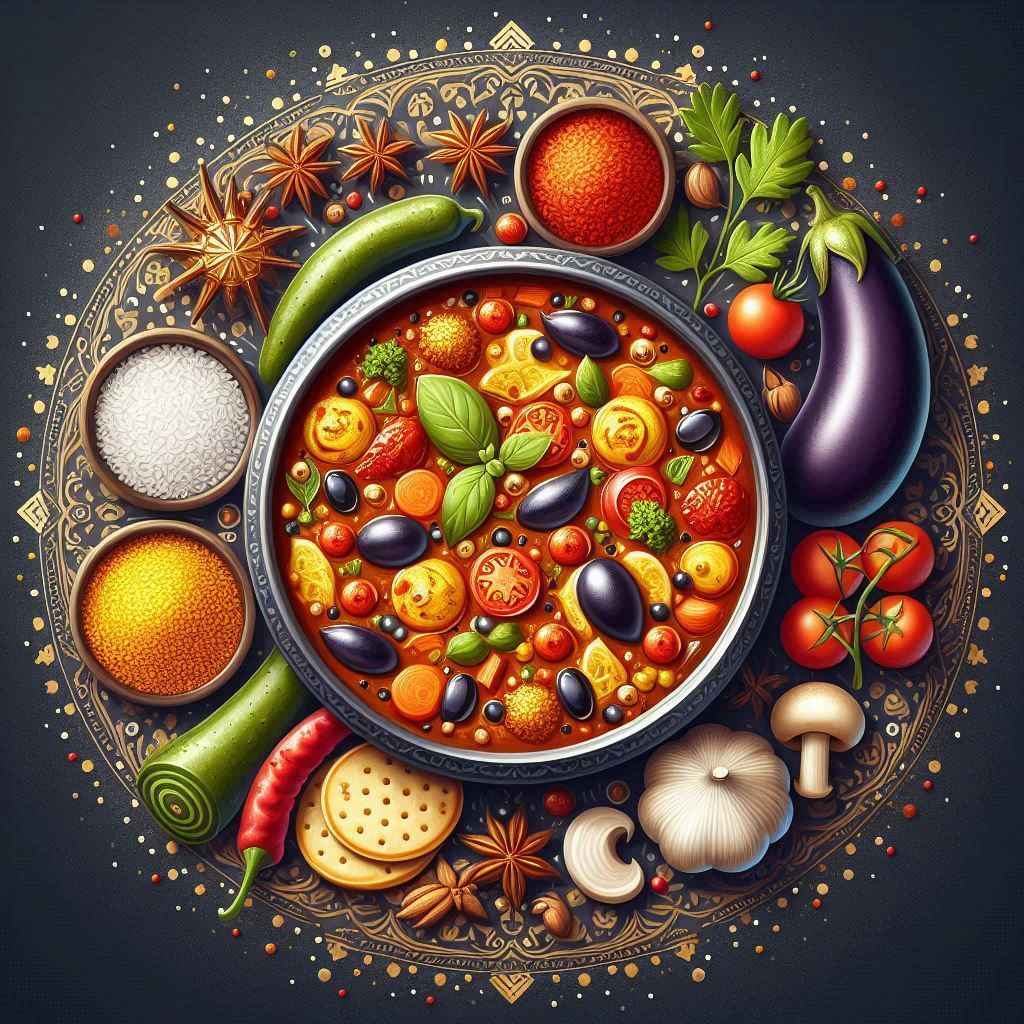
A Journey Through Time: The Story of Vegetable Korma
The Vegetable Korma, a fragrant and creamy dish that delights taste buds worldwide, has a rich history woven into the tapestry of Indian cuisine. While its exact origins are shrouded in the mists of time, we can trace its evolution through various culinary influences and cultural exchanges.
A Mughal Legacy:
The story of Korma begins in the kitchens of the Mughal Empire, a period marked by a vibrant exchange of culinary ideas between India and Persia. The word “Korma” itself is believed to be derived from the Persian word “Qorma,” meaning “to stew.” During this era, the Mughals introduced the use of rich, creamy sauces and aromatic spices to Indian cuisine, paving the way for the development of the Korma.
The Influence of the Royal Kitchen:
The Mughal emperors were renowned for their lavish feasts, and their kitchens were hubs of culinary innovation. It is believed that the Korma, with its delicate flavors and elegant presentation, was a favorite dish of the Mughal elite. The dish’s preparation involved meticulous attention to detail, with ingredients like almonds, cashews, and yogurt used to create a luxurious and creamy sauce.
A Journey to the Subcontinent:
Over time, the Korma traveled from the Mughal courts to the kitchens of ordinary people, evolving and adapting to local tastes and ingredients. The use of yogurt, a staple in Indian cuisine, became increasingly prevalent, adding a tangy and creamy dimension to the dish. Regional variations emerged, with different spices and vegetables being incorporated depending on the geographic location.
Vegetable Korma: A Modern Classic:
Today, the Vegetable Korma is a beloved dish across India and beyond. It has become a staple in many vegetarian households and restaurants, offering a flavorful and satisfying meal. The dish’s versatility allows for endless variations, with chefs incorporating a wide range of vegetables like cauliflower, carrots, green beans, potatoes, and spinach.
Unveiling the Secrets of the Vegetable Korma: A Step-by-Step Guide
Now, let’s delve into the art of preparing this delectable dish. The recipe below offers a classic approach, but feel free to experiment with different spices and vegetables to create your own unique version.
Ingredients:
- Vegetables: 1 medium cauliflower, cut into florets; 1 cup diced carrots; 1 cup diced potatoes; 1 cup diced green beans; 1 cup diced spinach
- Spice Paste: 1 tablespoon ginger-garlic paste; 1 teaspoon ground coriander; 1 teaspoon ground cumin; ½ teaspoon turmeric powder; ½ teaspoon red chili powder; ½ teaspoon garam masala
- Creamy Base: 1 cup plain yogurt; 1 cup milk; ½ cup chopped almonds; ½ cup chopped cashews; 1 tablespoon butter
- Flavor Enhancers: 1 small onion, finely chopped; 2 cloves garlic, minced; 1 inch piece of ginger, grated; 1 green chili, finely chopped; Salt to taste; Fresh cilantro for garnish
Preparation:
- Prepare the Vegetables: Wash and chop the vegetables into bite-sized pieces. Blanch the cauliflower florets for a few minutes to soften them.
- Create the Spice Paste: In a mortar and pestle, grind the ginger-garlic paste, coriander, cumin, turmeric, chili powder, and garam masala into a smooth paste. Alternatively, use a spice grinder.
- Make the Creamy Base: In a blender, combine the yogurt, milk, almonds, cashews, and butter. Blend until smooth and creamy.
- Sauté the Aromatics: Heat the butter in a large pot or pan over medium heat. Add the chopped onion, garlic, ginger, and green chili. Sauté until fragrant and softened.
- Combine the Spice Paste: Add the spice paste to the pot and cook for a minute, stirring constantly, until the raw aroma dissipates.
- Add the Vegetables: Add the blanched cauliflower florets, carrots, potatoes, and green beans to the pot. Stir well to coat them with the spices.
- Pour in the Creamy Base: Pour the creamy yogurt mixture into the pot. Stir well to combine all the ingredients.
- Simmer and Season: Cover the pot and simmer over low heat for 15-20 minutes, or until the vegetables are tender. Stir occasionally to prevent sticking. Add salt to taste.
- Add the Spinach: Add the diced spinach to the pot and stir well. Cover and cook for another 2-3 minutes, until the spinach wilts.
- Garnish and Serve: Garnish the Vegetable Korma with fresh cilantro leaves. Serve hot with rice or naan bread.
Tips for a Perfect Korma:
- Spice Level: Adjust the amount of chili powder to your desired spice level.
- Creaminess: For a richer flavor, use full-fat yogurt and milk.
- Texture: If you prefer a smoother sauce, blend the cooked vegetables slightly.
- Variety: Experiment with different vegetables like bell peppers, mushrooms, or peas.
Beyond the Plate: The Cultural Significance of the Vegetable Korma
The Vegetable Korma is more than just a delicious dish; it represents a confluence of culinary traditions and cultural influences. It embodies the spirit of sharing and hospitality, bringing people together around a table to enjoy a flavorful and satisfying meal.
So, the next time you savor the creamy goodness of a Vegetable Korma, take a moment to appreciate the rich history and cultural significance that lies behind each bite. It’s a testament to the enduring power of food to connect us across time and cultures.



